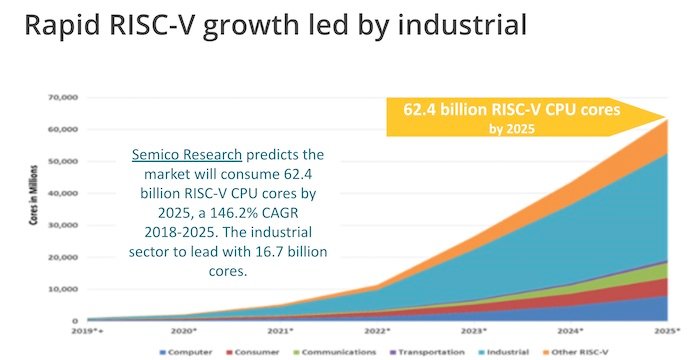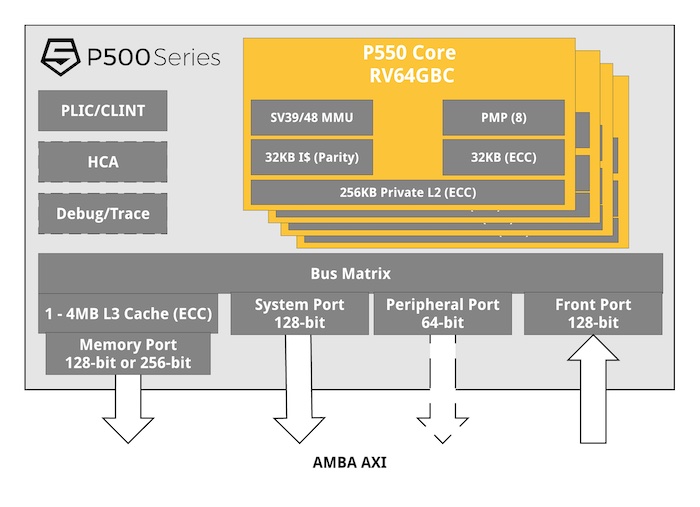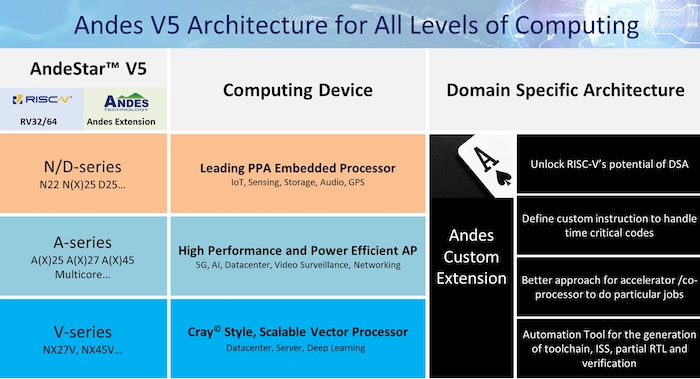Recently, RISC-V has been stirring up the industry with talk about competing with major companies like Arm. Could the stage be ready for RISC-V to take a significant slice of the processor architecture pie over the next decade? As a free, open-source technology, this instruction set architecture claims to simplify the design of scalable, modular processors.

A graph showing the potential growth of RISC-V in the CPU market. Screenshot used courtesy of the RISC-V Foundation
To try to answer that question, this article will take a look at a couple of lead players in the RISC-V ecosystem, and what moves are they making to compete with dominant players like ARM and Intel.
Before diving into that, it might be interesting to give a brief timeline of RISC-V development.
RISC-V: The Story of Then, Now, and Future?
From humble beginnings as academic research in 2010 to the founding of the RISC-V International Association in 2020, this open-source instruction set seems to be starting to gain real traction as an industry standard for semiconductor design.

ISA evolution from over the last decade. Screenshot used courtesy of the RISC-V Foundation
As 2021 progresses, RISC-V is moving beyond the SoC, application, and microprocessor realms. The special interest group for high-performance computing (SIGHPC) is looking to bring RISC-V to machine learning, artificial intelligence, and Edge applications. This example of RISC-V branching out could just be the start of this open-source architecture set's journey into more industries and applications.
One company in specific is trying to push the preexisting boundaries between RISC-V and processors, SiFive.
SiFive’s “Performance” Family Is Challenging Industry
SiFive, a company founded by the inventors of RISC-V, has announced a new family of processors competing with the Arm Cortex-A75. For a qualitative performance reference, the ARM Cortex-A75 can be found in Qualcomm’s Snapdragon 845 processor.
The premier processor of this family is the Performance P550. The P550 is compatible with the RISC-V RV64GC ISA specifications and features a thirteen-stage, triple-issue, out-of-order pipeline. In addition, it can scale up to be a four-core configuration, which makes it competitive with the Cortex-A75, which has a similar amount of area.

Block diagram of the SiFive P500 series. Image used courtesy of SiFive
The new processor joins the SiFive Intelligence family to offer significant choices in SoC selection. The SiFive Intelligence family is focused on ML/AI applications and provides a total hardware/software solution ranging from low-power to HPC applications.
With advancements like these coming from SiFive, its potential as a competitor for Arm appears to be growing, especially with rumors of a $2 billion offer from Intel circulating in the shadows. SiFive is making further waves with team-ups with Renesas to bring RISC-V to automotive applications and past collaborations with Intel.
However, SiFive isn’t the only player making moves with RISC-V. Andes Technology, a softcore (FPGA-based) company based out of Taiwan, has a novel approach for SoC designers to test out new cores and maximize their hardware performance.
Accessing Andes’ SoftCore RISC-V BoardFarm For Your Application
Andes Technology has created a collection of web-accessible FPGA platforms, called the AndesBoardFarm, which allows users to run the AndesCore RISC-V processors remotely with their unique programs.

Andes Technology's newest architecture is highly scalable. Image used courtesy of the Andes Technology Corp
In the release, Dr. Charlie Su, President and CTO of Andes Technology Corp, spoke about the complexities of selecting the correct cores for specific applications and changing design requirements.
The ability to create a profile and load test deployments to real-hardware remotely can provide a significant competitive advantage. It echoes similar capabilities of cloud service providers for advanced software deployments.
Open-source as a methodology for deployment is relatively common in the industry in recent years, with RISC-V joining other foundations which aim to innovate their respective areas.
Final Thoughts on Open-Source Technology Trends
From RISC-V to O-RAN and lastly, to the venerable Linux, open-source architectures are continuing to emerge as a means to innovate in many technological spheres.
RISC-V could be a contender for the crown in semiconductor design. Especially since the RISC-V Foundation went from 29 members in 2015 to over 1000 in 2021, which shows a growing interest.
Of course, as with any open standard, there is the risk of fragmentation and lack of interoperability. However, the foundation appears to understand this and requires that members meet interoperability requirements in their implementation of the ISA.
If the right steps are taken, and more companies start seeing the value of RISC-V, there could be potential for an industry shake-up when it comes to open-source materials.
Do you have any thoughts on the RISC-V ISA? The comments section, like the architecture, is open.
